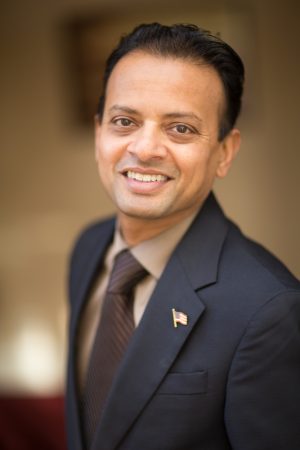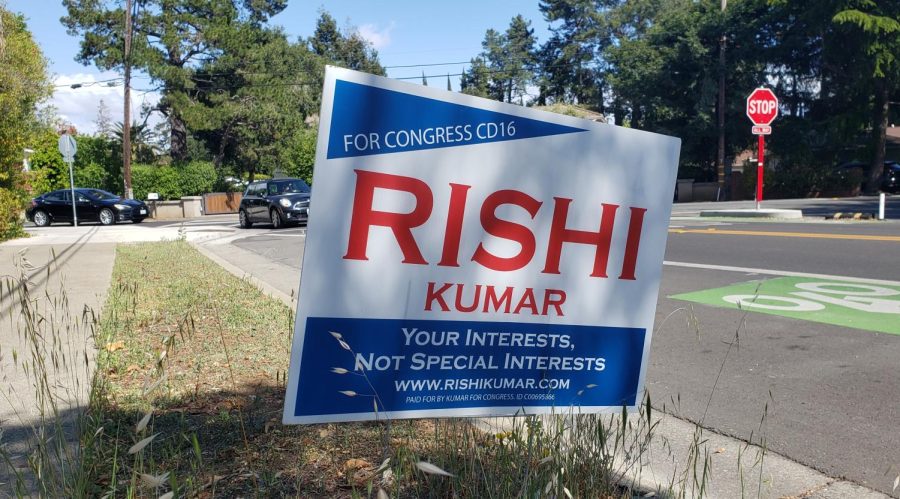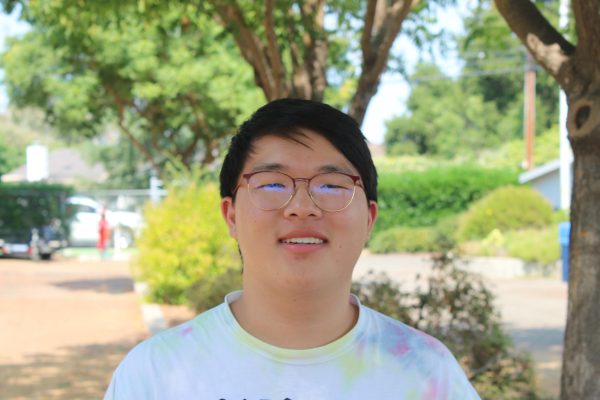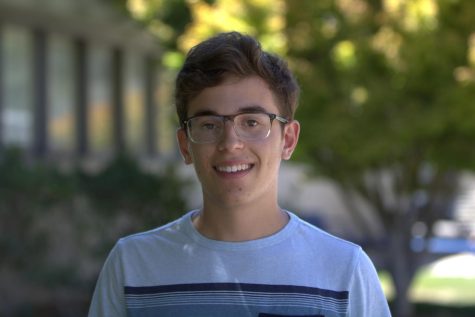Rishi Kumar, a Democratic candidate for the US House of Representatives, hopes to shake up Congress with Silicon Valley-style populism.
Rishi Kumar: Your neighborhood tech bro, running for Congress
May 20, 2022
Rishi Kumar doesn’t want you to think of him as just a politician. In addition to his seat on the Saratoga City Council, he’s spent 15 years as an executive in the world of Big Tech. Framing himself as a political outsider, Kumar, a Democrat, hopes to bring technological knowhow and a fresh face to the House of Representatives—but it won’t be easy to get there.
The 2022 midterms, starting with the June 7 primary election, are Rishi Kumar’s second attempt at success in an uphill battle. Kumar is looking to unseat Congresswoman Anna Eshoo, who has represented much of Silicon Valley, including Los Altos and Mountain View, for decades. Despite a difficult path to the House, Kumar is hopeful that his populist, high-tech message will carry him to the Capitol.
From Immigrant to Politician
Kumar grew up in a middle-class family in India, immigrating to the United States for higher education. He immediately became attached to his graduate school, the University of Connecticut, and to his new country.
“I love America for how it embraced me, claimed me as one of its own,” Kumar said. “My university professors invited me to Thanksgiving dinners, and so many on campus guided me, showed me the way in a new country.”
After graduating, he settled down in America and moved to Saratoga with his wife, Seema. Following decades at tech companies and involvement in his local community, including fundraising for local events and supporting local neighborhood watch programs, Kumar progressed into local politics, beginning his tenure as a delegate for the California Democratic Party in 2013 and later continuing onto the Saratoga City Council. He is currently serving his second term.
“Truly speaking, I was always apolitical growing up, but what I could not do was watch something bad happening or a problem emerge and do nothing about it,” Kumar said. “I have always been an activist at heart … I have found my calling in the life of public service. Kindness has amazing outreach. Helping others brings me deep joy.”
Campaigning
In his 2020 campaign against Anna Eshoo, Kumar campaigned as a fiscal moderate and social progressive focused on technological literacy, innovation and housing while targeting Eshoo for her longtime campaign contributions from pharmaceutical companies and an allegedly unproductive track record. Despite his loss to Eshoo, Kumar is still confident about his 2022
run.

“Our strategy is definitely working and the positive feedback from district residents is a huge boost for our volunteers,” Kumar said. “Thanks to unprecedented district engagement and support, we have an army of volunteers supporting our run. We are ready to win.”
This election cycle, Kumar has maintained his message from 2020, calling out what he views as out-of-touch, corrupt, “technologically illiterate” and aging government leadership. His main focuses are technological innovation in lawmaking, healthcare, infrastructure, climate action and protections against threats like biowarfare. He also focuses on California- and Silicon Valley-specific issues like big tech, stagnating innovation, and wildfires. Kumar views his tenure at tech companies as conducive to Congressional leadership.
“We need engaged leadership to fix our underlying issues, and that is why I am running,” Kumar said. “We must lead the charge with cutting-edge technology and prepare the next generation to succeed in a 21st-century economy.”
While Kumar specifically targets Eshoo’s age and decades-long Congressional tenure as making her out of touch with the computer-powered present, others view Eshoo’s experience as beneficial to her position.
“If [Eshoo] were to lose, we would lose a highly experienced, senior Congresswoman that is chair of the Health Subcommittee and that is doing everything in her power to do what is right for her constituents,” Jessica Speiser, a board member of the Los Altos School District and a delegate of the Democratic Senatorial Campaign Committee, said. “Seniority makes a difference in Congress and makes your voice louder and more heard than those of new congresspeople.”
Eshoo’s seniority is one of the largest obstacles Kumar’s campaign faces. She has represented Silicon Valley in the House since 1993, and no candidate has been able to unseat her since. The closest any candidate came to doing so was Kumar himself in 2020.
Although Kumar ran uncontested in the Democratic field against Eshoo in 2020, the upcoming race has seen two new candidates, Palo Alto council member Greg Tanaka and attorney Ajwang Rading. Kumar professed welcome for the new candidates, calling the field’s expansion an “expression of democracy,” but emphasized a consistent campaign strategy based on engaging in conversations with constituents and spreading the message through emails, flyers and more.
The Next Generation
From the beginning, Kumar’s community engagement has focused largely on younger people. Before campaigning, Kumar operated bootcamps for entrepreneurship and computer science aimed to benefit disadvantaged youth. Young people, including high-school and college students, play an important role in his campaign through a structured internship program. His volunteers have focused on door-to-door canvassing, developing applications and even creating TikTok videos for his campaign’s account, some of which have garnered hundreds of thousands of views.
“Getting young people involved, engaging them in their community, as well as promoting the importance of education, is not just an important demographic in this district, it is crucial for a thriving and sustainable future of this country,” Kumar said. “The younger minds bring unique approaches; they are more technology aware, and social media aware.”
Westmont High School freshman Deetya Rajan volunteered after discovering Kumar’s internship program. As an intern, Deetya incorporated Kumar’s policies and core messages into TikTok videos over the summer promoting Kumar as a progressive supporting legislation like Medicare for All and the Green New Deal. She also participated in Kumar’s assertive canvassing strategy, going door-to-door and campaigning with friends.
“I think his strategies in reaching out to local students have been effective, as even before I joined the campaign, I had people come to my house and campaign to my family,” Deetya said. “I always saw his lawn signs around my neighborhood and I also heard about it from friends.”
Kumar’s campaign remains confident in its core populist message, and it’s betting on branding through canvassing and promotion to carry his campaign, especially through younger students.
“I ask every student to take up one cause and never stop fighting for it,” said Kumar. “If this young generation decides to vote and take the lead, they can move mountains. The next generation gives me hope.”



